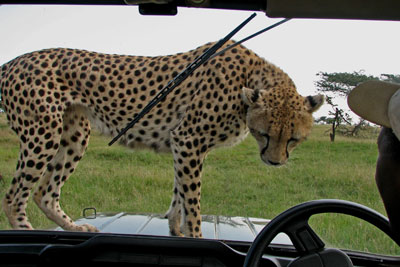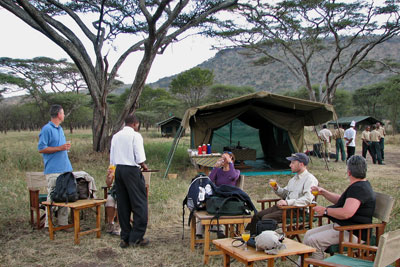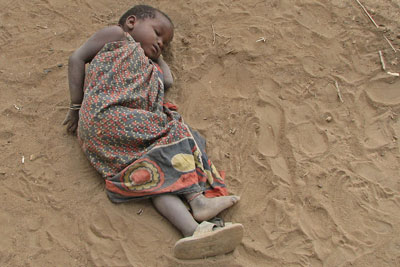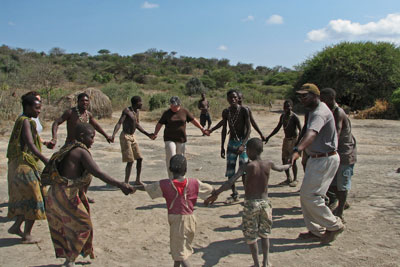A journey to Africa — Finding a little heaven on Earth in Kenya & Tanzania
by William Reed, Denton, TX
If you want to touch Mother Earth, Africa is a good place to start. You will get to see, smell and feel the vibrancy of life around you.
The anticipation
I contacted Rothschild Safaris (Denver CO; 800/405-9463, www.rothschildsafaris.com) in late 2006. Leora Rothschild immediately sent me a few itineraries to browse through.
Leora’s knowledge of Africa was abundantly clear from the beginning. Within a few weeks I had our safari booked for June 2007. The safari preparation documents they sent were very comprehensive and made me feel comfortable and excited about my decision to travel with them.
My wife, Betty, and I spent our first night of the trip at the Nairobi Serena Hotel, with its polished marble floors, slippers by our bed and quite possibly the best seafood buffet I have ever tasted. The next morning we visited the Karen Blixen house, the Langata Giraffe Center and the Daphne Sheldrick elephant orphanage.
Later that day, as our small plane took off for the Maasai Mara, the real magic began, and it did not end until we boarded our flight home. Climbing over the Nairobi slums — a sea of rusted tin roofs — we flew out over the Rift Valley escarpment.
Landing at an airport that was little more than a dirt road, we set off with Francis, our guide, along the river, crossing it several times. There were holes cut in our vehicle’s roof so passengers could stand for a better view. Betty and I stood the whole way.
With the dry wind blowing in our faces, the incredible view of new plants and animals was something not to be seen through a window.
The Maasai Mara
A short two to three hours after landing, we crossed into the Maasai Mara game reserve and there, in the distance, we could see two small arms waving above the grass. It was Flick, the manager of Elephant Pepper Camp.
There was something about the atmosphere of this camp that made us feel part of the group almost before we got out of our vehicle. Perhaps it was Flick waving or maybe the other people who greeted us as we approached the camp. We felt good, comfortable and accepted.
Elephant Pepper is a tented camp, but the only relation that staying there bears to “camping” is that the sides of each room are made of canvas. The double bed, shower and toilet made for more comfort than we expected. And then there was the Maasai Mara.
The Maasai Mara is a sea of grass dotted with the occasional acacia tree and bustling with wildlife. During the morning game drive, we stopped under an acacia tree and had breakfast laid out on the hood of the vehicle while surrounded by animals — it felt like we were sitting in the middle of a giant open-air zoo. How much closer to heaven can you get?
Since we were on a customized safari, our guide would stay in one place as long as we wanted. On one of our game drives a mother cheetah jumped onto the hood of our Russian jeep and looked at us through the windshield. Moments before, I had been up through the cutout in the roof and, were I still there, would have been close enough to pat her on the head. She stood there for maybe a minute, uttered a short bark and leapt off into the brush, her cubs following.
After a brief encounter with lions on the runway (there are constant reminders that this is their territory), we continued our journey to Tanzania.
Arusha
In Arusha, the market was a labyrinth of pathways crammed with every smell, sight and taste I could imagine. We passed stalls with fruit, vegetables and piles of fish, and then there was the meat stall, offering anything from a sheep’s head to a cow’s tail.
The next morning we met the other travelers (now seven in total) whom we would be with for the rest of our trip. Our 2-hour drive over bumpy unpaved roads was all part of the wonderful experience. Finally we arrived at our first destination in Tanzania, Kisima Ngeda Tented Camp, which appeared out of the desert as we descended to the shore of Lake Eyasi.
The accommodations were lovely. Except for the little critters that ran across the roof, the trees full of birds and the occasional monkey scampering about, the night was quiet. Directly in front of our tent was the lake, with flamingos, pelicans, duck-billed ibis and smaller, brightly colored birds of every shape and color.
The food here was good and plentiful, and after dinner we would sit in a ring of chairs around a fire pit, each with a cool Tusker beer, listening to the night sounds.
Memorable moments
One morning we left early to visit the Hadzabe people. Their way of life as hunters and gatherers has not changed in 20,000 years. We followed the tribesmen on a hunt on which they killed three small birds, built a fire in the dry riverbed and cooked them. Seeing this may have been the single most significant thing we saw on the entire trip.
Back down the bumpy road, we headed to the Ngorongoro Farm House, a lodge set on a large colonial farm. It was immaculately groomed, the rooms were huge, and Betty was thankful for the indoor shower and tiled floor.
Nearby was Ngorongoro Crater, a UNESCO World Heritage Site for good reason. A collapsed volcano, the crater measures about 12 miles across. It is hard to describe the density of animals there — it seemed we were in a sea of animals.
We also visited Olduvai Gorge, where anthropologists have found many remains to include relatives of Lucy, perhaps the most famous of them all. To me, it was touching to know this was close to the place my long-distant ancestors started on the long road to me.
Leaving the gorge, we arrived about six hours later at Serengeti Tented Camp. Had I been offered a plane ride instead, it would have been a mistake to take it. It was six hours of dusty, teeth-jarring washboard road and an endless sea of dry grass, but I would not have missed it for the world. It was worth it just seeing a Maasai man walking by himself in the middle of this with no obvious origin or destination.
We arrived at our mobile tented camp, whose location is based on the movement of the annual migration. Again, the list of wildlife we saw reads like a zoo brochure. We took two game drives a day, and I stood barefoot in the seat the entire way for both.
More to tell
I’ve left a lot out of this report. I left out the visit to the “mosquito village.” I left out the part where we witnessed a lion kill of two wildebeests. I left out the part where we met the migration and the long lines of zebras and wildebeests plodding north, single file. All of it combined was a very moving experience, for me.
Perhaps the only way for others to understand what we saw and did is to go on this trip. Go and listen to the wind in the trees, have dust in your face, smell the market, feel the bumps in the road. There is incredible beauty in the land, the plants, the animals and the people of Africa.
The variety of each selected camp, the seamless transfers and the affable guides and staff made this safari truly memorable. Rothschild Safaris knows how to create the perfect customized safari. Combine that with the personal flare of Leora, who grew up in Africa, and you’re in for a tremendous experience.
After all was said and done, our 17-day safari cost $7,821 per person, including international airfare. I believe it was well worth the price.





